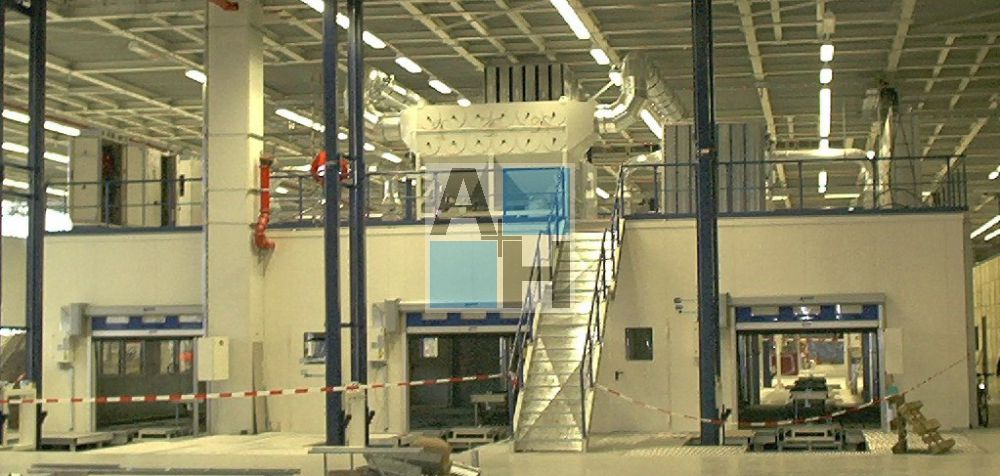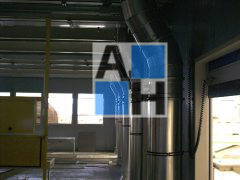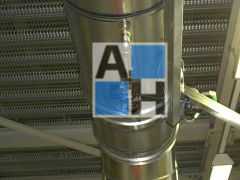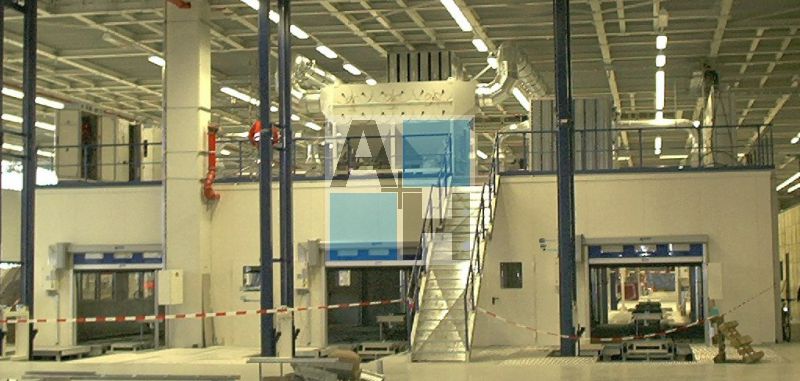Sanding cabins are used for sanding work at the solder and welding points of the raw body shells. The resulting sanding dust contains hazardous substances such as zinc, chrome and nickel and is alveoli-passing (i.e. it can accumulate in the alveoli of the worker). Therefore, it must be ensured that the statutory MAK values for these hazardous substances are undercut. At the same time, the permitted values for the present air speed at the workplace must be complied with. The arising sanding dust must be collected and disposed of so that no fire can arise in the air duct system.
The MAK values can only be complied with at defined air routing. This forced air routing takes place top-down to achieve laminar displacement flow to press down the resulting sanding dust.
A continuous extraction system is installed to the left and right of the sanding workplaces, in which most of the dust is collected and routed to an air duct system applied with fire protection flaps. An automatic filter unit with explosion protection and sprinkler extinguishing device then filters out the sanding dust.
A spark extinguishing system in the exhaust system recognises any arising sparks by igniting dust particles and extinguishes them within seconds. Extinguishing takes place by a special nozzle that also disperses the extinguishing water very finely. The water droplets are pulled along with the air flow; extinguishing takes only 1-2 seconds. This way, the exhaust system is not flooded. Occasional extinguishing of sparks is a "normal" operating condition that does not trigger a fire alarm. Only exceeding a pre-defined number of extinguishing intervals within a defined time window or triggering of the sprinklers in the filter system will trigger a fire alarm. In case of fire alarm, the fire protection flaps in the ventilation system are closed.
The filtered clean air can be resupplied to the works hall after treatment, and the air balance in the works hall remains balanced.










